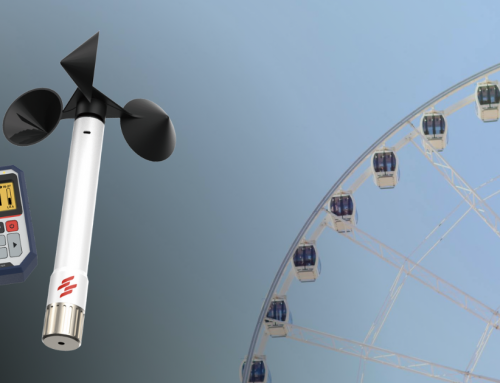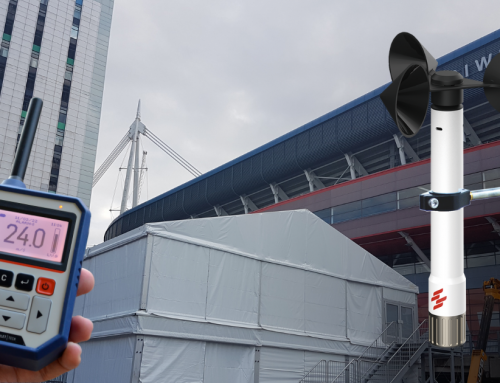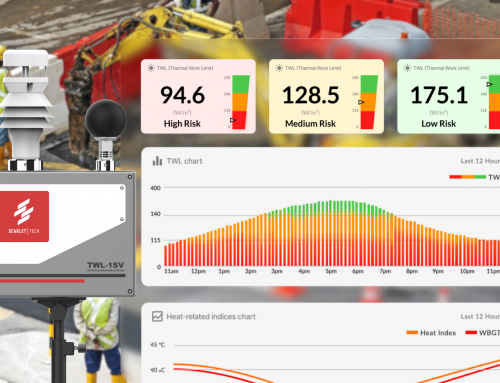Last Updated on
As someone responsible for managing safety at construction sites, you need to be aware of the dangers of wind. Part of keeping your workers safe is knowing how to measure wind direction. This blog post will discuss what you need to know about measuring wind direction. We’ll cover the importance of accurate measurements, the different methods of measurement, and some tips on how to stay safe while working in windy conditions.
Why wind direction is important to know
Wind direction is an essential factor when it comes to predicting the weather. Knowing what direction the wind is blowing from can help alert authorities to hazards stalking an area or what storms may be headed their way. Knowing what measure wind direction is crucial in helping to track the severity of storms. For example, the National Weather Service relies on accurate wind direction measurements to predict and warn people of dangerous storms and hurricanes. To properly measure wind direction, specific instruments need to be used, such as a wind vane or anemometer. Accurately measuring what direction the winds are coming from with these instruments helps improve predictions by providing more detailed information about what kind of weather is coming. By knowing what the wind direction can tell us, we can take steps towards ensuring safety and preparing for whatever Mother Nature has in store.
How to measure wind direction
Measuring wind direction is essential for numerous aviation, construction, and sailing industries. A wireless anemometer can measure both wind speed and direction accurately. To measure the wind, a wireless anemometer should be installed at height(s) compatible with the studied area’s topography. The vertical angle between the anemometer’s sensors and the ground is the reference point for measuring wind direction. The usual instrument for measuring wind speed is called a wind vane, while what measures wind direction is termed a weathercock or compass. Additionally, several instruments exist that combine both principles to create a single device for measuring both the velocity and direction of winds, such as modern airport surface observation systems. By having a reliable instrument for measuring wind speed and direction, one can ensure proper practices in areas where understanding weather conditions could potentially be hazardous or expensive without it.
What instruments are used to measure wind direction
Measuring wind direction is key to wind monitoring systems, and many different instruments have been designed for that purpose. These wind direction measuring instruments range from wind vanes and wind socks to wind gauges, wind cups, and wind anemometers. Wind vanes are the most traditional instruments, consisting of a weathervane-like arrow with a tail facing into the wind. They indicate the wind’s direction but cannot measure its speed. Windsocks, on the other hand, are lighter in weight, consume less power, and can measure wind speed in addition to wind direction. Wind gauges are generally used with wind blades that measure both angle and speed of air movements.
Last but not least, wind cups rotate like helicopter blades and are usually suspended underneath a tower or pole. In contrast, wind anemometers operate by sensing tiny changes in pressure depending on the rotational velocity. Of these instrument measurements of wind direction vary, not adding any specific recommendation as to which instrument should be used since it depends on the particular nature of the application.
The different types of anemometers
Anemometers are an important tool for measuring and monitoring wind speed and direction. The most common types of anemometers are cup, propeller, sonic vane, wireless, and hot-wire anemometers. Cup anemometers use four cups attached to a rotating hub to measure wind speeds up to 100 miles per hour, while propeller anemometers use two or three rotating blades that can measure even higher speeds. Sonic vane technology can measure both the direction and intensity of wind using a microphone placed in front of the turbine blades. On the other hand, wireless anemometers are portable devices that allow users to read temperatures wirelessly from remote sensors. Last but not least, hot-wire anemometers measure wind speed directly by measuring the heating effects in a fine wire as air passes over it. With all these different types of anemometers, anyone can accurately measure wind speed and direction — whether for weather forecasting or other needs.
How to use a weather vane
Using a weather vane is a great way to measure wind direction. It is an essential instrument for measuring the wind and the most common method of identifying its blowing direction. To use a weather vane, first, attach it securely to an elevated point, ideally on top of a building or pole. Once appropriately mounted, the arrow on the weather vane will always point in the same direction as the wind, no matter how it blows. To read what direction it is pointing, you need to observe which side of the compass rose indicator your arrow points towards or what cardinals directly correspond with the sides. This simple yet effective weather tool allows for incredibly accurate wind direction measurement and offers invaluable information, from predicting weather patterns to planning a sailing route.
Why you should take multiple readings
Taking multiple readings can help to ensure the accuracy of your measurements when it comes to wind direction. A single reading may be heavily influenced by what is known as ‘localized effects,’ such as trees and buildings, which can have a significant impact on what measures wind direction—as such, taking multiple readings is essential to obtain a more accurate result that reflects the true conditions of the surrounding environment. Moreover, using an instrument for measuring wind speed and other tools like a wind direction measuring instrument can provide further assurance that you are obtaining an accurate result. Knowing how to measure the wind appropriately will give you more reliable data and let you make more informed decisions.
Congratulations, you are now ready to take your knowledge of wind direction and reading weather patterns to the next level! For more accurate readings, try utilizing a selection of instruments at various times throughout the day. Additionally, if you have any questions or concerns regarding safety measures, browse our website for further information.
Learn More | Safety Equipment
Scarlet Tech is a pioneering provider of occupational health and safety technology. Our range of wireless and IoT instruments, including the renowned wireless crane anemometer series and the award-winning crane camera, sets them apart. Scarlet also houses other notable instrumentation, such as heat stress and sound level meters.






